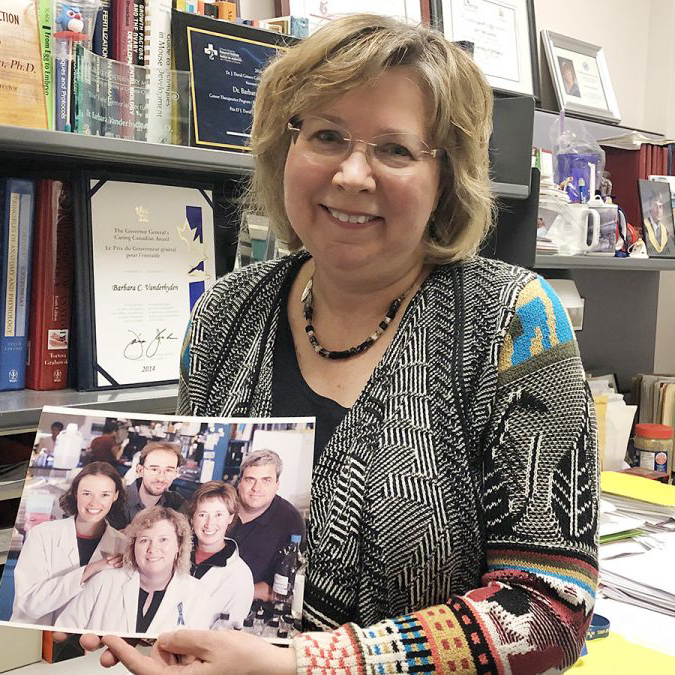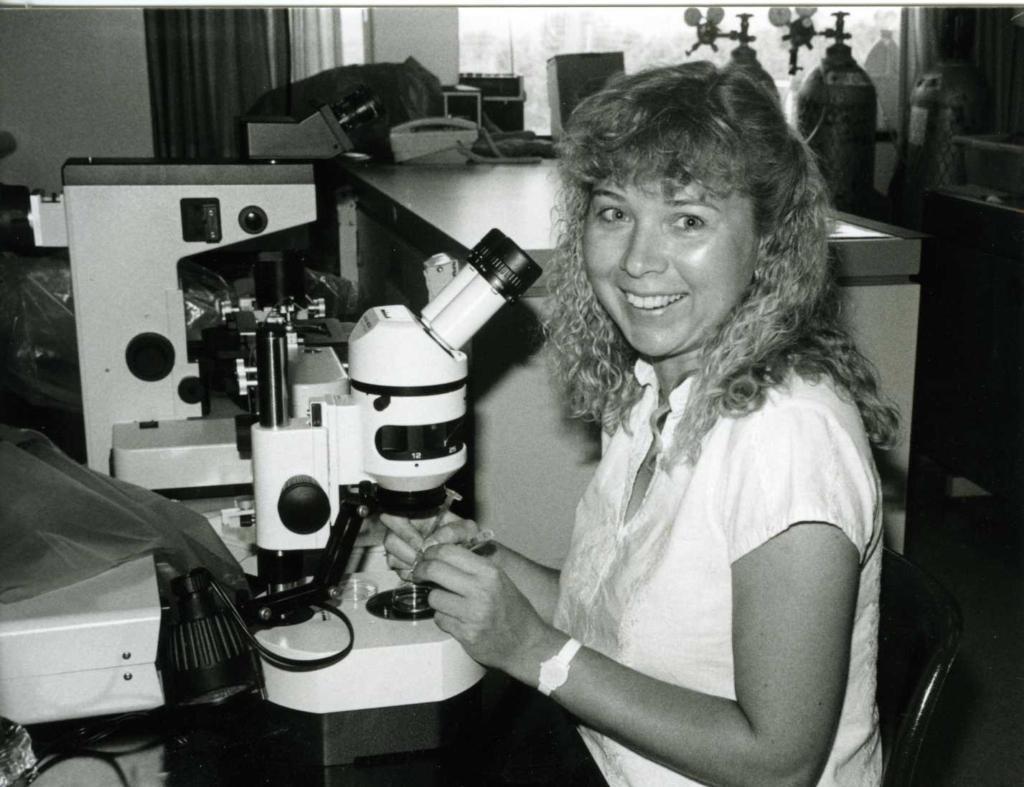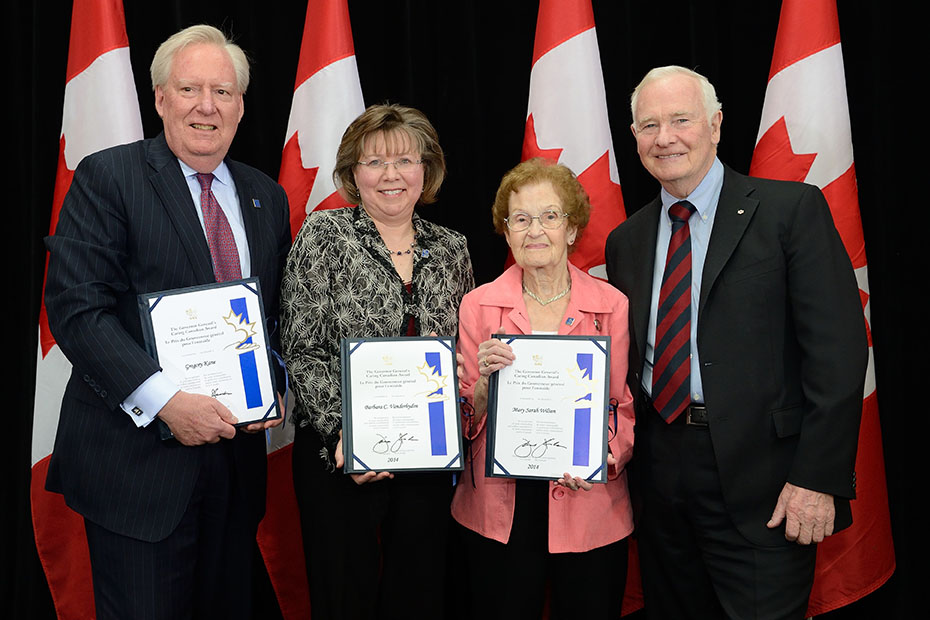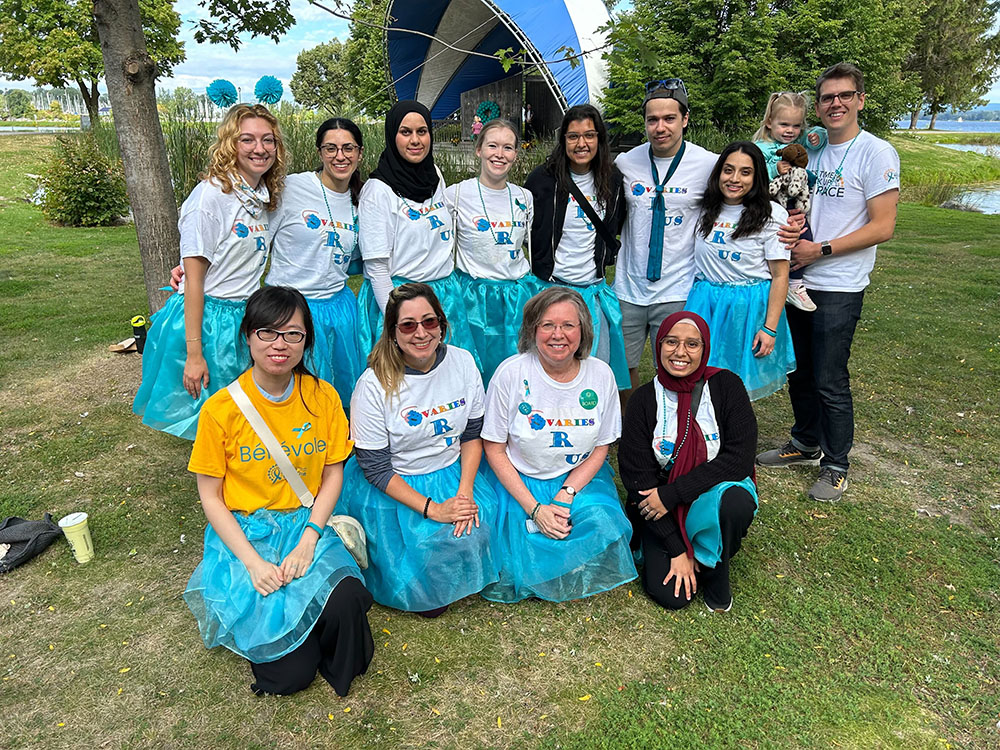
Dr. Barbara Vanderhyden has spent her career looking for the metaphorical missing pieces to some of ovarian cancer’s most complex puzzles. As a senior scientist at The Ottawa Hospital, professor at the University of Ottawa, and Corinne Boyer Chair in Ovarian Cancer Research, Dr. Vanderhyden’s work makes a 3,000-piece puzzle look like child’s play.
From her first award — the Soroptimist Award for her volunteering as a high schooler in 1978 — to the accolades she’s garnered since — including the Dr. J. David Grimes Research Career Achievement Award, the Capital Educator’s Award, and the Governor General’s Caring Canadian Award — Dr. Vanderhyden’s award-winning career has changed the way ovarian cancer is understood and treated today.
Keep reading to learn why physiology is like a puzzle and why sucking eggs is a good thing in Dr. Vanderhyden’s lab.
Q: Can you tell us about your childhood and interests as a youth?
A: I grew up Southwestern Ontario, first in Stratford and then in a small town called St. Thomas. Small towns fit me very nicely; it was a great place to grow up.
For hobbies, I played piano and did a lot of service to the community. There was a teacher at my school who tried to get us out to do outreach in the community as much as possible.
Besides that, my teenage years were made up with academics. I was very good at science and math, which I was drawn to because I’m curiosity-driven. I love the process of trying to figure things out. Give me a puzzle or mystery and I’m a happy camper.
Q: How did you choose to pursue medical research, and specifically ovarian cancer research?
A: I started by doing an undergrad in physiology at Western University, and the first two years were a lot of basic science and math. In third year, I got a medical physiology textbook, and that’s where it first hit me how wonderfully interconnected all our parts are. It’s like a big puzzle, where you can put all the pieces together into one body. I was like, “Wow! Who invented this? Who would make it so complicated?” Now, 40 years later, we’re still learning about how all these pieces function together and what happens when they don’t function well.

There was nothing I wanted to do more than continue to explore the depths of physiology, so I went on to do my postdoc studying reproductive physiology, and then got offered a position here, at The Ottawa Hospital.
I became interested in cancer specifically after my team, as part of the cancer research group, moved into the brand new Cancer Centre in 1995. I was doing reproductive physiology as a scientist, and all of a sudden, there were cancer patients in the waiting areas who I would pass on my way to the third floor for research. It reminded me of where the bigger problems lie and put some onus on me to try to solve some of these puzzles.
I knew the ovary inside and out, and there was very little ovarian cancer research going on in Canada at that time, and so I thought, “OK, there needs to be more. Let’s figure out what happens when a tumour develops in the ovary.”
Q: What’s the most interesting thing you’ve found researching ovarian cancer?
A: What I find the most interesting at any point is whatever I’m working on. But one period that was very exciting was in the 1990s when we discovered the cells in the ovaries have a unique way of talking to each other.
The oocyte — the cell that becomes an egg that can be fertilized — grows within a structure called a follicle. The only other cells in the structure are granulosa cells. At the time, we believed the oocyte was a passive recipient of whatever messages the granulosa cells sent to it: when to grow, when to stop growing, when to mature, when to ovulate. We thought it was all controlled by the granulosa cells. But that didn’t make sense to me, because we know cells communicate with each other, so I thought there had to be a way to prove the oocytes send signals back to the granulosa cells.

The problem was that the follicle structure is a ball, with the oocyte in the middle, so we couldn’t easily study the oocyte without disrupting the granulosa cells. But we found a way to go in and suck the oocyte out of the ball of cells. Unofficially we called it sucking eggs, but when we published, we called it an oocytectomy. It allowed us to study what the granulosa cells did as a three-dimensional structure when the oocyte was inside versus when it was removed. As it turns out, the granulosa cells don’t even know what to do without the oocyte telling them!
A more recent discovery we’ve made is that human ovaries become fibrotic with age. Fibrosis occurs when there’s more collagen, which holds our cells together, than is required, and it forms sheets of stiffer tissue. Fibrotic tissues are a niche for cancer growth, but we don’t know exactly why that is.
That the ovaries develop fibrosis wasn’t unexpected; tissues tend to become fibrotic with age. But we also had an outlier in our collection of data, a postmenopausal woman who should have had a fibrotic ovary but didn’t. We determined she was taking the drug metformin for diabetes, and we’ve since done a number of studies to show metformin actually prevents the aging process in the ovaries. So right now, we’re trying to figure out how fibrotic tissue creates an environment for cancer growth and also how to use metformin to prevent fibrosis of the ovaries.
Q: What is The Ottawa Hospital doing in cancer research that’s exciting?
A: Ottawa was among the first communities to do immunotherapy research. We recognized that surgery, radiation, chemotherapy have their place, but they’re not appealing strategies to deal with cancer for most patients. I’m not an immunologist, but I’m surrounded by people who study immunotherapies and they were among the first to do so. That national sense of biotherapy and immunotherapy work really has its foundation here in Ottawa.
It’s very exciting for me, because ovarian cancers actually don’t respond to immunotherapies. I’m tapping into all this wonderful knowledge and expertise to say, “OK, why not? What makes them resistant?”
Q: What does community support mean for your work?
A: I’ve been very fortunate to have tremendous support from the community — and especially those with ovarian cancer, their friends, and their families — for three reasons. One, the patients have been extremely generous in giving us access to their tumour tissues for our research. Two, when we talk to patients, there’s no hesitation to tell us what works for them and what doesn’t, so we can ensure the research we do is both relevant and important to people affected by this disease. And third, the financial donations they make to research can often mean the difference between being able to do out-of-the-box thinking on a project.

Q: You were instrumental in starting the Ottawa chapter of Let’s Talk Science, can you tell us a bit about that?
A: As a grad student at Western, there was a very fledgling science outreach program in my department, run by another grad student. When I moved to Ottawa, I recognized right away there were no opportunities for students to learn how to teach. So, I set up a science outreach program that was the first branch of Let’s Talk Science outside of London in 1993. The goal is to connect elementary and high school students with science, technology, engineering and mathematics (STEM), help build their skills in the field, and encourage them to pursue STEM careers.
As we went further afield, we noticed more and more discrepancies in science opportunities, and so from 2007 until 2019, I also established and ran a program called Science Travels, which focused entirely on bringing STEM outreach to Indigenous youth in remote northern communities.
I ran Let’s Talk Science Ottawa for 25 years, and I am still involved, but about five years ago we got too big for our britches, and I couldn’t run it anymore and keep all the other things going. It’s now being run full-time by a former volunteer.

Q: Where would we find you when you’re not at work?
A: It depends on the weather and depends on the day. If it’s a cold rainy day, I am curled up in my favourite chair reading a good mystery or whodunnit, or I could be doing a jigsaw. Our dining room table for the last decade always has a 2,000- or 3,000-piece puzzle on it; I get quite a lot of gratification seeing the whole thing when it’s finished.
If it’s nice weather, I’m often taking walks with some of the other women in my neighbourhood. If it’s a Thursday, I’m with the guys in the neighbourhood for a movie night.
I also love eating my husband’s cooking, because he’s an absolutely incredible chef. He was a stroke and osteoporosis researcher, and since he retired, he loves to experiment in the kitchen, and I am the beneficiary of all that experimentation. It’s wonderful.

